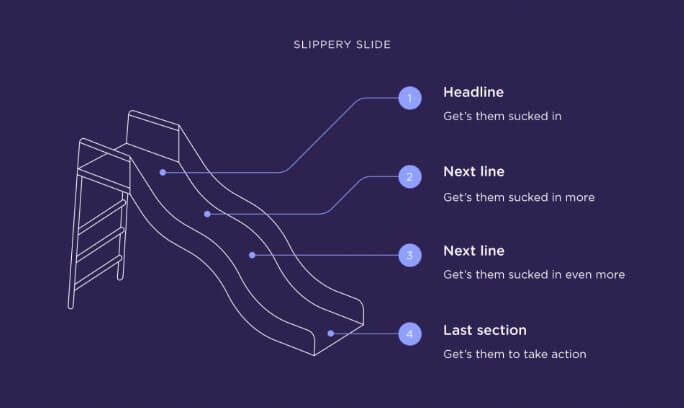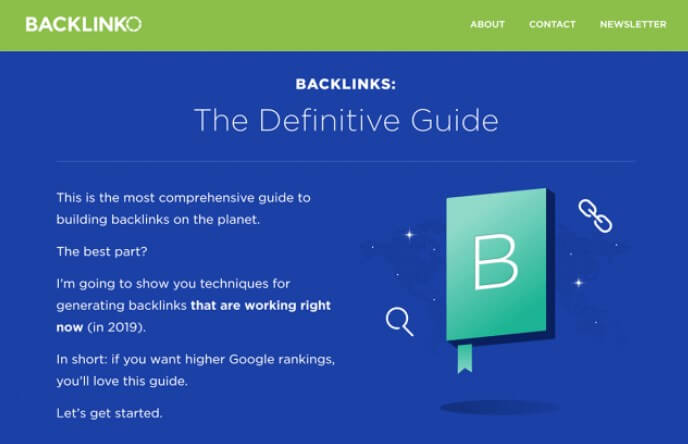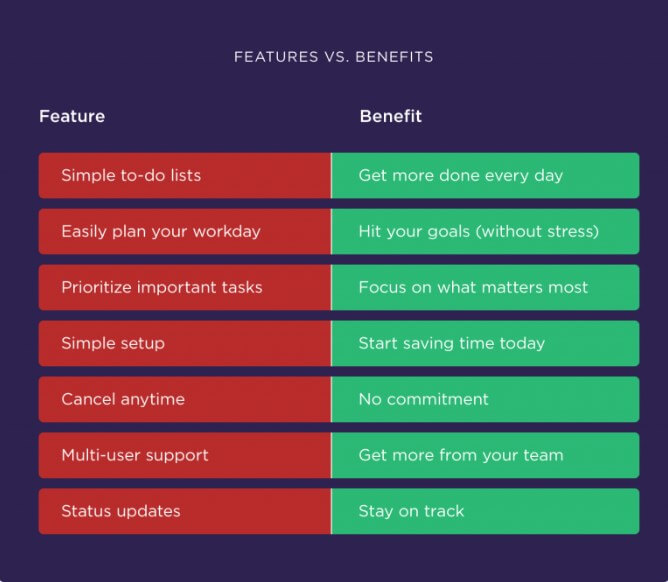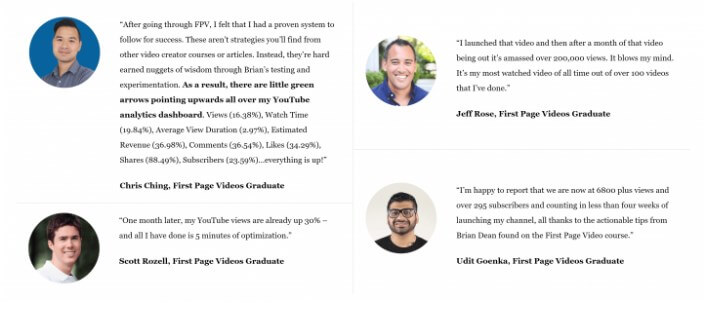It takes great skill to be able to generate sales online. But did you know that simple yet effective writing would help you to do better? The art of copywriting seems a little bit overwhelming, as most professionals take years to learn its techniques.
But did you know that you don’t need any prior experience to start from the basics? It surely takes time but what you need is an informative guide that would help you as you get started.
From hereon, we can help you with that.
What is Copywriting?
Copywriting is a form of writing that aims mainly to inspire or persuade. Most of the time, it is used to convert leads into sales.
We imagine it as a salesman who contacts all customers at once personally. In the same manner, a copywriter virtually offers the product using his writing skills.
He then still manages to generate sales to the company through a blog post, sales letters, video scripts, and other media. An excellent copy would attract readers to take action, and convert them into customers.
Some of its benefits are:
- higher conversion rates
- better flow and structure of articles
- getting more engagements
- understanding your readers, and acknowledging what they want
In short, it can improve any element of your marketing!
Here are the MOST IMPORTANT KEY PRINCIPLES IN COPYWRITING!
Hear What Your Prospect Has To Say
Online threads, surveys, and interviews are the goldmine of copywriting! One thing to look out for is your customer’s preferences, and how would you be able to come up with a plan that would get them interested in what you offer.
Reddit, Quora, Amazon, and other social media platforms, on the other hand, are the best places that would help you learn more about ‘what your prospect wants.’ It’s like an online coffee shop for most people. This is where they hang out.
So you either check the most popular topics or go on and search for a specific topic. Look for the thread that has the most engagements. Of course, these basic steps require observation and comprehension. Observe what people prefer, and understand what it takes to be able to provide it to them.
For example, if people commented on how they hate jawbreakers because it can be challenging to eat, then create a copy that shows how your ‘candy’ product is flavor-friendly and more comfortable to chew.
Use Specific Capture Headlines
Did you know that 80% of the people read the headline while the remaining 20% only read the copy? This is why it’s entirely important to showcase what you’ve got through your headlines. Show people what you have to offer first hand. You can use numbers and emotions that take their attention.
For instance, instead of saying something like “Delicious Candy For You”, you can tweak it a bit too “The Most Delicious Candies You Get For $5”. Which one do you think is more effective then?
USE FOMO (Fear of Missing Out)
FOMO is 10x more effective in converting sales. However, it’s not entirely applicable in every situation. But this triggers a strong sense of reaction to your prospect.
Words like “Don’t Miss The Fun” or “Only a Few Chances Left” creates social pressure to the belief that others (who purchase the product) might have been enjoying it already while you, on the other side, aren’t. It works like a scarcity but stemming up a little bit with emotions.
Use Short Sentences
According to research conducted by the American Press Institute (API), it’s easier to read and understand short sentences pages. It’s not about how short content is, but how short a sentence or a paragraph would be.
Most people nowadays prefer short yet satisfying words to read rather than bombarding them with several sentence structures in a single frame. What you can do is condense sentences, and break them down.
Write Strong Leads
This is the section of the page that comes after the headline. If you lose people here, you lose them for good.
Here’s what you can do:
- Use a hook in the first or second sentences of your section to grab your reader’s attention.
- Followed by a 6-8 short sentence just to keep the reader’s going right before transitioning to the primary focus.
- Add 4-5 lines of mini-stories.
A strong lead would capture your reader’s attention whether or not they’re interested in purchasing or just enough to satisfy their curiosity.
The Slippery Slide
One of the goals in copywriting is to ‘keep people reading.’
Indeed, a simple view of your page would be helpful. However, it would make a significant change if readers would be able to view the rest of your article, and spend time on it. And the slippery slide is a way to make some keep reading your page.
- A Headline – attracts your readers.
- Next Line – attracts them even more.
- Line After – more attractive than ever!
- Last Section – move them to take action!

Credit: backlinko
- You can add a design, a picture, or a video that would keep them interested.
- Creating bucket bridges that would show a list of tips or key answers.
- Start with an interesting story, and end your article with the climax of it.
- Add a ‘coming up’ phrase such as ‘Find out the answer in the end’ or ‘Discover what it takes as you read the following.’
These tactics would move your reader to stay tuned, and look for the answers in the latter section of your page.
The AIDA Formula
Can I just say how this is such a classic formula in writing? Once AIDA is applied, and then everything goes on how it exactly planned.

A – ttention (get the attention of the readers)
I – nterest (write something that can get them interested in what you’re offering; a promise at the end of the article perhaps)
D – esire (entice them with what most of your reader’s plan to achieve)
A – ction (call-to-action statement)
These formulas are the most basic yet the most underrated technique in any form of writing. Take time and apply it right at the top of your article.
Benefits Over Features
Features are a great touch, but benefits sell. Adding features of a product is one detailed process that you can do. But if you don’t want your readers to get bored, you can focus on its benefits directly.
You can even make a table that would list the features and explain the benefits of each.

A Sense of Urgency and Scarcity
Who can deny that people who ask for more time to think about the offer, ended up not buying? This is where urgency and scarcity come in!
When people feel pressured, they tend to act fast without doubting. So if you put words like:
- For a Limited Time Only!
- Only 24 Hours Left!
- 5 Slots available
- This ends next week
- Hurry Up!
Don’t Miss Out!
There are big chances that people would try to follow that specific time, date, or slots left to join! In all honesty, it’s one of the effective tactics that most internet marketers use nowadays.
Please don’t overdo it, set some limitations, or end up losing people’s trust.
Show Your Biggest Social Proofs
In terms of whether to buy a product or not, social proofs answer why people should not be hesitant in making a purchase. See, with the use of social media, or the internet as a whole, one of the strongest features is to show the results of the people who successfully purchased, and use the product.
It’s not entirely about the number of sales, but the strongest social proofs or the best successful testimonials and stories. You can add how many people made a purchase or sign up already. You can also add specific customers that got an amazing result!

Avoid Using Fancy or Big Words
Not unless you’re in an essay competition that requires a deep-level of comprehension and big words for intellectuals to read. But as a tech-savvy, nobody is impressed with it anymore.
Which sentence do you prefer?
- I have to utilize these tools to outperform my competitors in this overwrought game.
- I have to use these tools to perform better than my competitors in this exciting game.
Easy pick! Using big or fancy words would just make your content harder to read. In the end, people won’t take anything from your page, and you soon be losing readers.
Pay Attention On How You Talk To Your Customers
Your readers might be interested in what you’re selling but not interested enough to buy. What’s the solution? Address their objections. Find out what they’re looking for, and what makes them decline to your offer.
Customers tend to turn down any offer if they start to hesitate on their capacity or capability like ‘Is this even gonna work’ or ‘It’s too expensive for me”. Try to re-adjust your offer, and create a strategy that would make them think your offer is the best, and there’s nowhere to look for such an amazing piece!
Besides that, you can even write how you personally to a single customer, write for skimmers (those who like to skip), and make use of an active voice instead. If you’re a beginner or who has an existing page that doesn’t sell much, it’s now your turn to apply these amazing steps for this year’s guidelines for copywriting.
You can only test its effectiveness on your page once you test it. Which among these would you apply on your sales page next?



